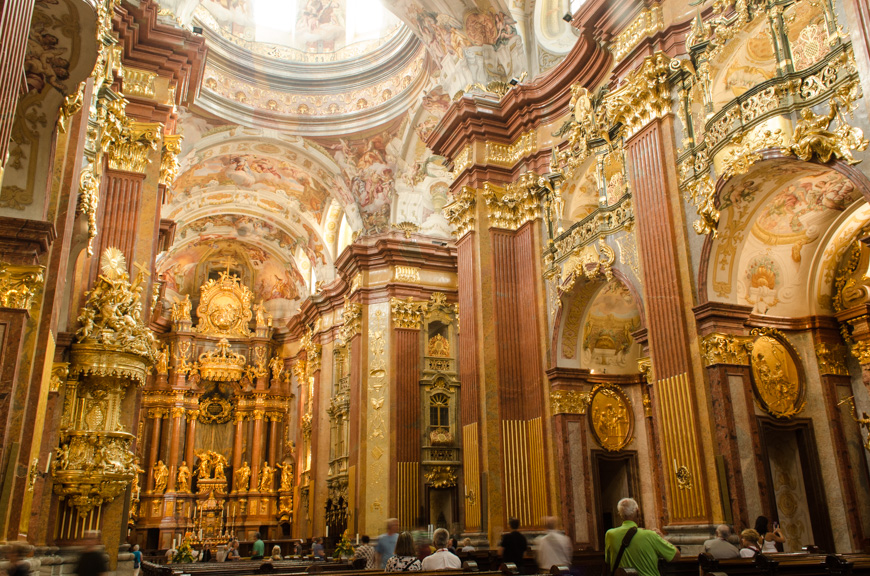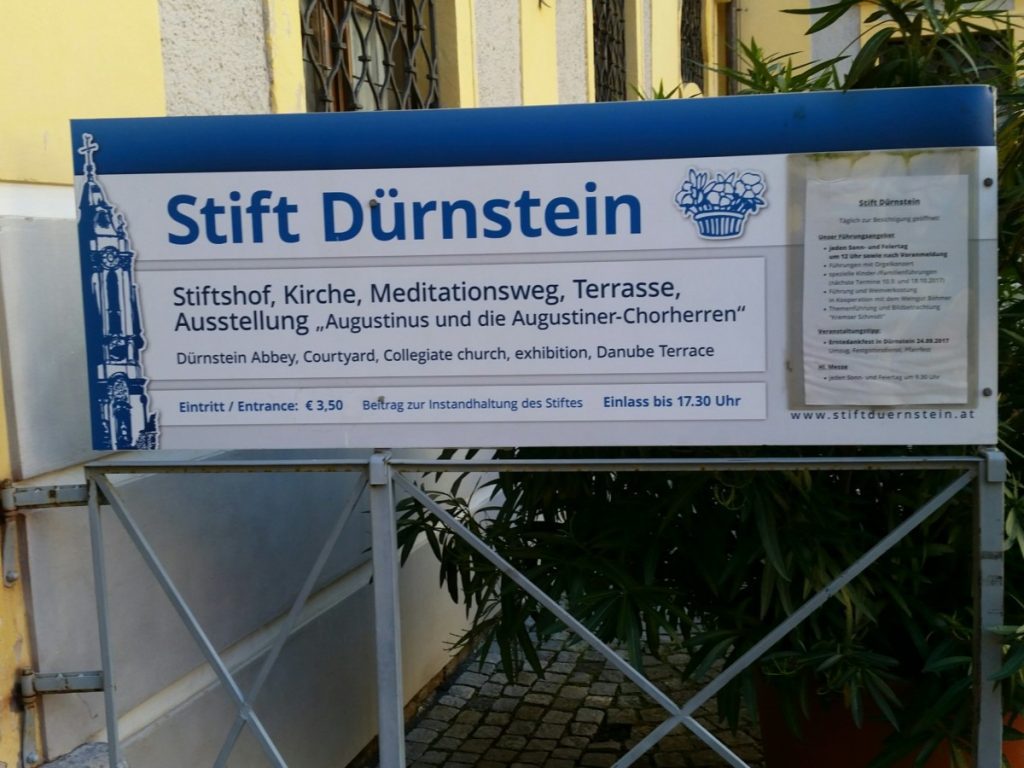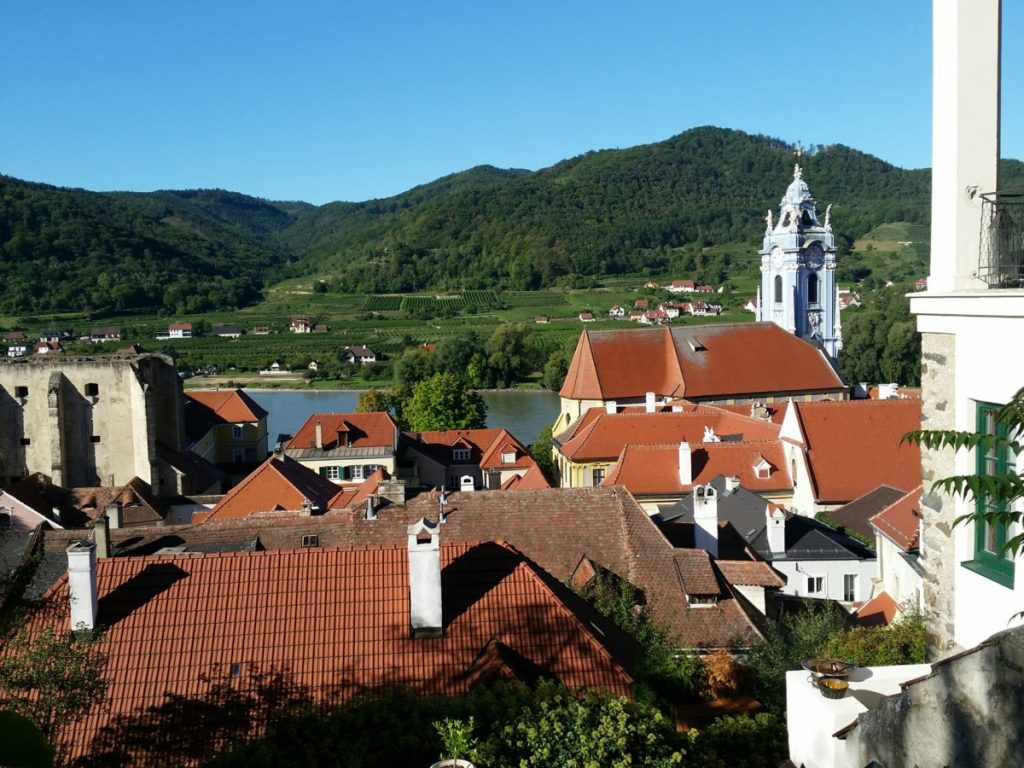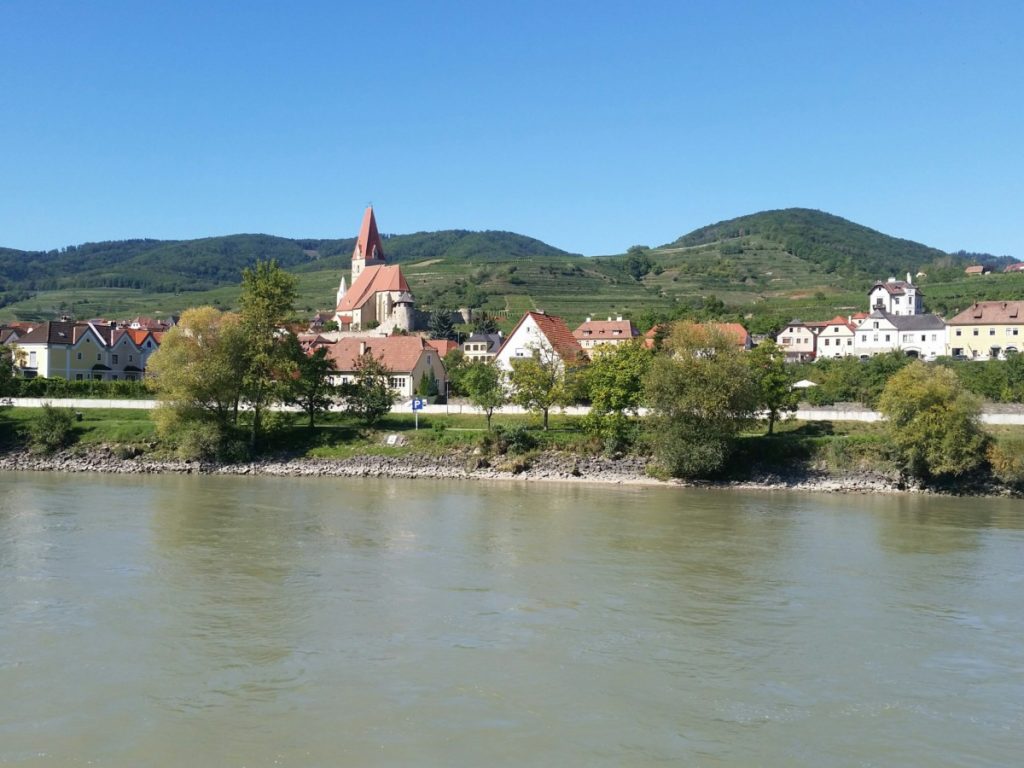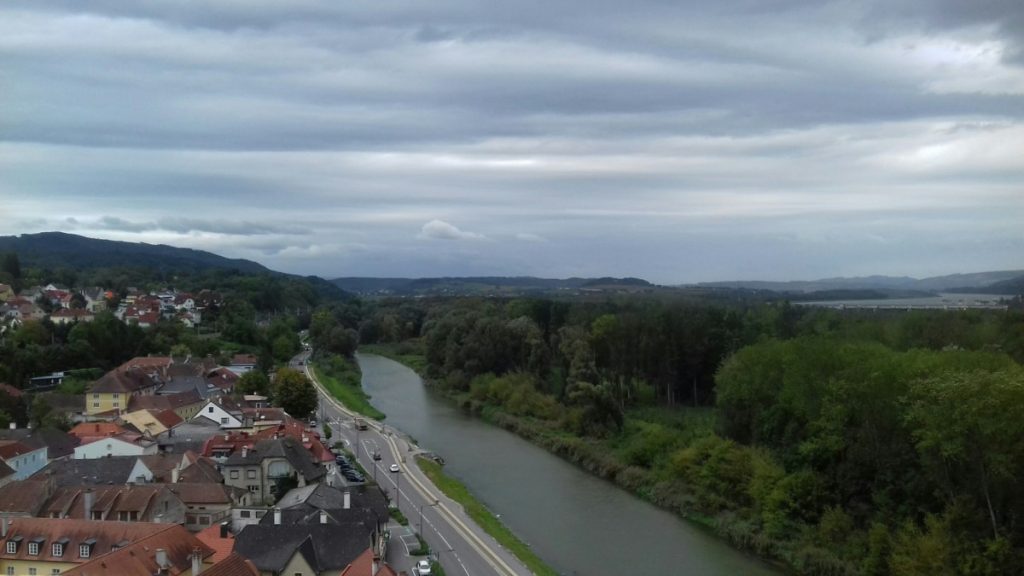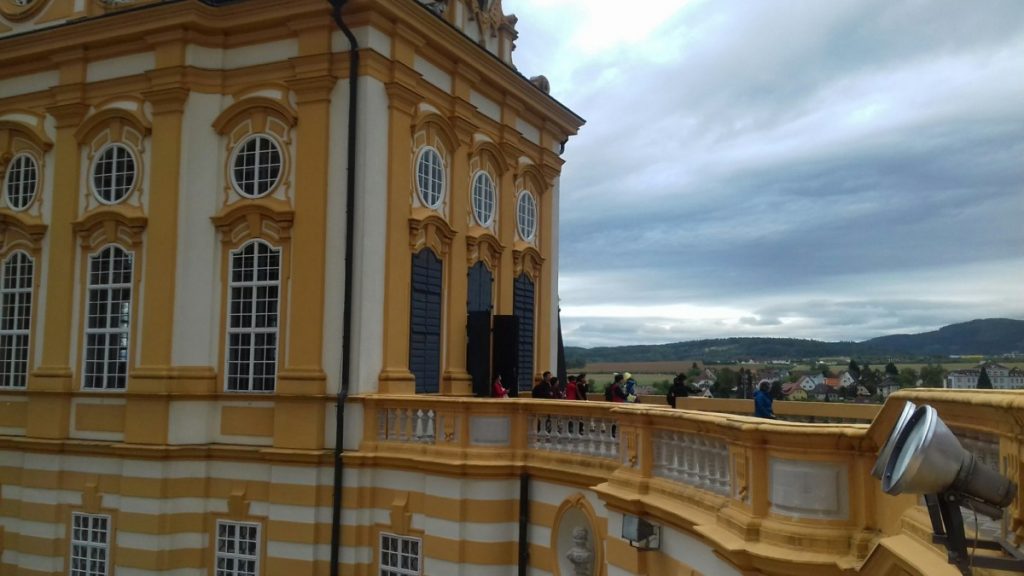We explored the town of Durnstein in the morning. There isn’t enough in this village to warrant a local guide. Bill and I hiked on our own towards the castle. I didn’t make it all the way up, my excuse being that I had to get back to the ship fora 10am massage. The hike also kicked Bonnie’s butt. Bill remembers that we visited this town on our 1987 trip and seeing the skeletons of two women saints in glass coffins in the church.
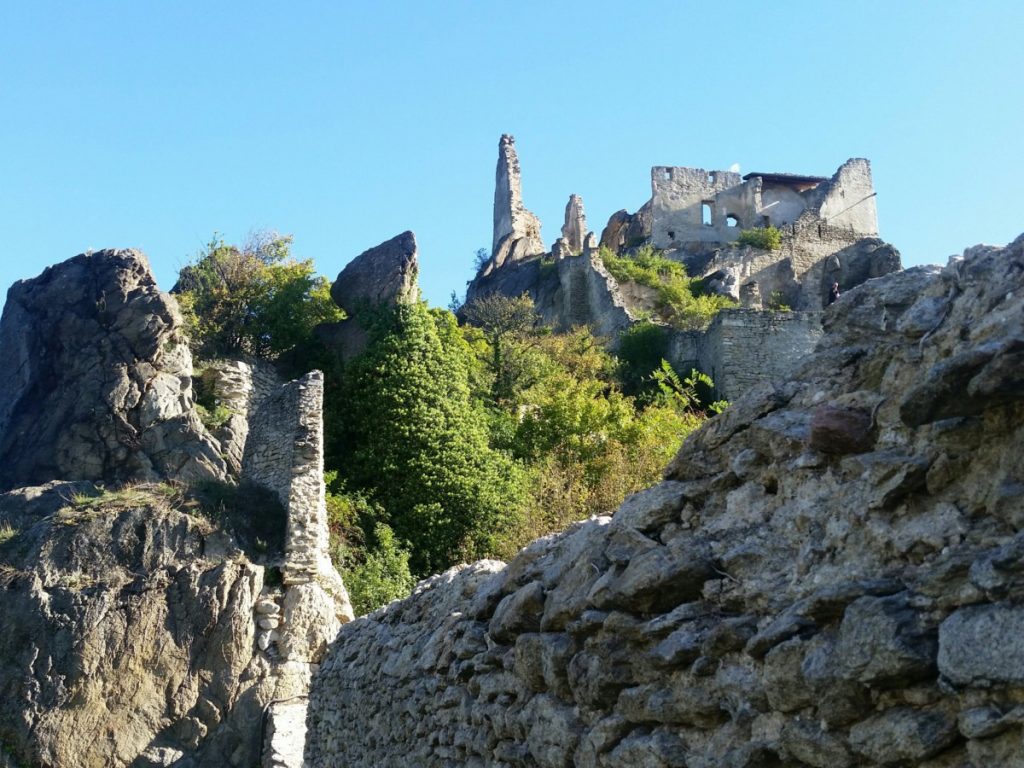
The ship sailed around 11.30 from Durnstein towards Melk to see the Melk Abbey. It was a beautiful day on the sun deck through the gorgeous Wachau Valley – lush vineyards, little villages, castles on the hills. There was lots of barge and cruise traffic on the river.
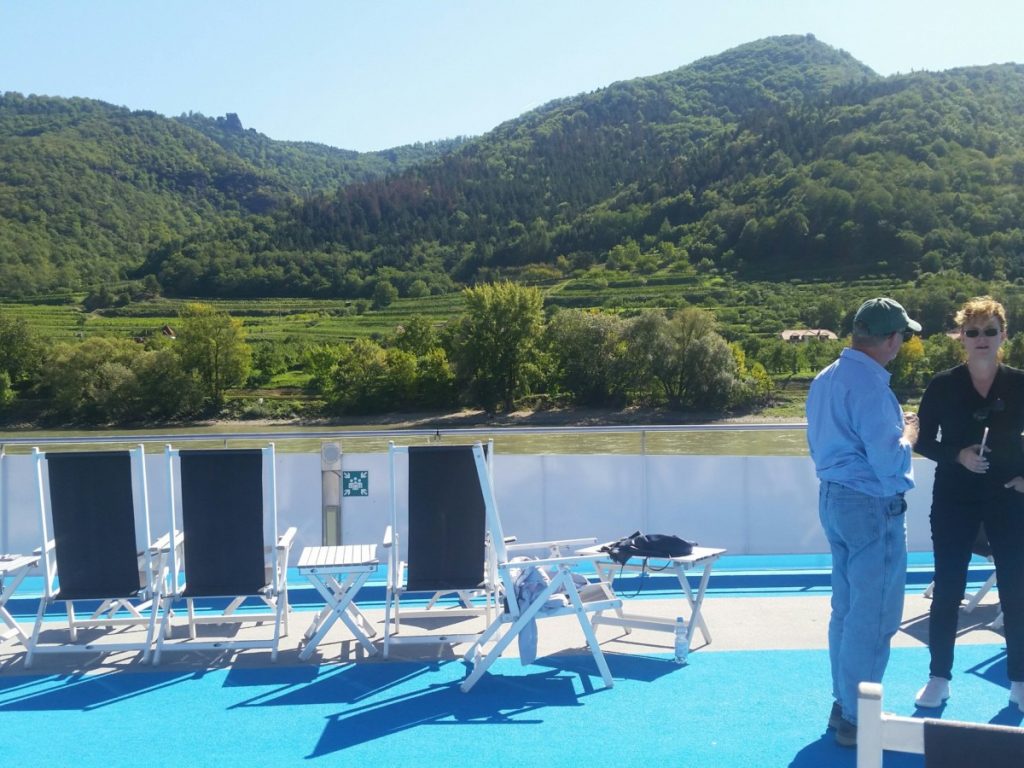
Melk Abbey
Stift Melk is located at the place where the Melk and Pielach Rivers flow into the Danube. Melk is a slavic word that means “slow moving stream” Archeologists have found indications of early settlements from Stone, Bronze and Iron ages. Melk has been part of many empires as far back as the 7th and 8th centuries. The building complex has been an estate, monastery, fortress, a royal residence and burial site for saints and kings. Leopold III in the 11th century gave the castle to the Benedictine monks who converted it to a fortified abbey. The abbey underwent a massive Baroque renovation in the 1600s and it is over the top Baroque. The cathedral was jaw dropping.
Our first guide at Melk was Katia.who was not very good. I jumped over to Anita’s group. She was excellent. Library and the cathedral were breath taking. No pictures allowed inside. Weather changed during our tour as we moved from one building to the next. Got some great shots of changing sky and the Danube below the abbey.
